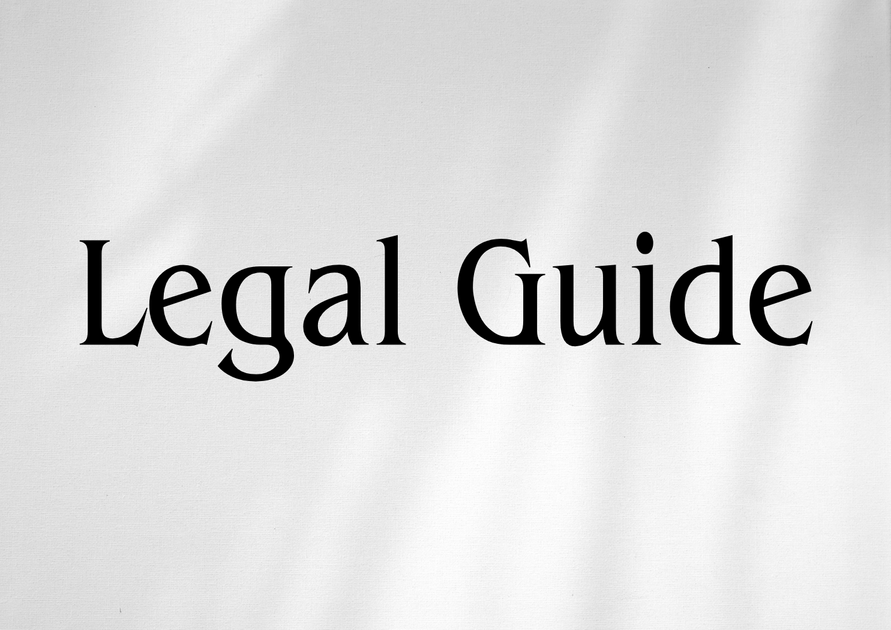Introduction: Understanding Sharia Governance in Qatari Islamic Financial Institutions
The global financial sector has witnessed significant growth in Sharia-compliant products and services, prompting policymakers in the region to develop robust regulatory frameworks. Qatar stands at the forefront in the GCC, having adopted a comprehensive Sharia governance framework for its Islamic financial institutions (IFIs). This is highly relevant not only for Qatari stakeholders but also for businesses and legal professionals in the UAE, particularly as the UAE implements its own regulatory updates in alignment with international best practices. Given the increased interconnectivity of the region’s financial markets and an uptick in cross-border activity, understanding the nuances of Qatar’s regulatory models is crucial for UAE-based legal practitioners, corporate executives, compliance officers, and any organization dealing with Islamic finance.
This article examines Qatar’s Sharia governance framework for Islamic financial institutions. It navigates through the legal structures, analyzes the technical requirements imposed on market players, highlights practical implications, examines compliance risks, and offers actionable insights for UAE stakeholders. The discussion references recent regulatory pronouncements and regional market trends, ensuring readers obtain a highly practical, consultancy-grade evaluation that supports both operational decision-making and strategic planning.
Table of Contents
- Overview of Qatar’s Sharia Governance Framework
- Regulatory Basis and Key Authorities
- Core Elements of the Framework
- Objectives of Sharia Governance and Regulatory Rationale
- Roles and Responsibilities in Sharia Governance
- Comparison: Qatari versus UAE Sharia Governance
- Case Studies and Practical Scenarios
- Compliance Risks and Enforcement
- Strategic Recommendations for UAE Entities
- Conclusion: Forward Perspective
Overview of Qatar’s Sharia Governance Framework
Qatar’s Sharia governance regime serves as the foundational regulatory architecture that ensures financial institutions adhere strictly to Islamic jurisprudence in all their functions. Officially mandated by the Qatar Central Bank (QCB), the framework is applied to all Qatari Islamic banks, takaful operators, investment companies, and any financial institution marketing Sharia-compliant products in Qatar. The framework is influenced by international standards such as those of the Accounting and Auditing Organization for Islamic Financial Institutions (AAOIFI) and the Islamic Financial Services Board (IFSB), but tailors its requirements to respect local jurisprudential nuances (fiqh) and Qatari regulatory objectives.
Key features of this regime include the establishment of dedicated Sharia Supervisory Boards (SSBs), the codification of internal Sharia compliance and audit controls, transparent public disclosures, and mandatory fit and proper criteria for board members and staff engaged in Sharia governance.
Regional Relevance and Connection to UAE Law
The Qatari model is instructive for the UAE due to its holistic approach to Sharia assurance and systematic integration with central regulatory authorities. As of the latest 2025 federal legislative updates, the UAE is incrementally enhancing its Islamic finance regime, drawing on lessons from fellow GCC jurisdictions. Large segments of the Qatari framework could influence future UAE Ministerial Resolutions or Federal Decrees and thus merit close attention from regional businesses and legal consultants.
Regulatory Basis and Key Authorities
Statutory Instruments and Regulatory Bodies
Qatar’s main legal underpinnings for Sharia governance appear in the Qatar Central Bank Law (Law No. 13 of 2012) and QCB’s circulars and instructions, notably the QCB Sharia Governance Instructions of 2019 and its latest amendments. These place legal duties not only on the financial institutions themselves but also on their boards and management. Additional technical guidance may be drawn from QCB’s periodic communiqués and AAOIFI standards, which are often referred to or directly incorporated.
The central regulatory authorities include:
- Qatar Central Bank (QCB): Issues primary regulations and oversees enforcement
- Shariah Governance Committee (QCB): Functions as a national Sharia board with the mandate to interpret and decide on complex Sharia queries affecting the sector as a whole
References to Official Laws and Resolutions
| Regulation | Scope | Key Provisions Relevant to IFIs |
|---|---|---|
| QCB Law 13/2012 | All Qatari banks and financial institutions | Mandate for Sharia compliance, supervisory powers for QCB |
| QCB Sharia Governance Instructions, 2019 | Islamic banks and financial entities | SSB establishment, governance controls, audit, disclosures |
| AAOIFI and IFSB Standards (as incorporated) | Supplementary across sector | Detailed technical benchmarks and best practices |
Core Elements of the Framework
Sharia Supervisory Boards (SSBs)
Each Qatari IFI must establish an independent SSB comprising recognized scholars with proven expertise in Islamic jurisprudence and finance. SSBs are empowered to review, advise, and approve all products, contracts, and policies to ensure strict Sharia adherence. Members are subject to professional vetting and ongoing suitability reviews, supporting robust governance.
Internal Controls and Sharia Audit
IFIs are required to implement multi-tiered internal Sharia audit and compliance monitoring systems, distinct from their regular internal audit functions. This involves:
- Pre-implementation Review: Ensuring Sharia compliance at product design stage
- Ongoing Monitoring: Continual compliance checks and rectification protocols
- Annual Sharia Audit: Comprehensive audit and public disclosure of Sharia audit findings
Typically, all significant Sharia-related issues are escalated to the SSB, with material breaches escalated to the QCB Shariah Governance Committee for sector-wide guidance.
Disclosure, Transparency, and Public Reporting
Qatari IFIs must regularly disclose to the market their Sharia compliance status, including publishing the annual Sharia audit report, any unresolved issues, and rectification actions taken. These requirements support market confidence and investor trust.
Fit and Proper Requirements
All individuals engaged in Sharia governance (board members, SSB members, Sharia compliance officers) must meet QCB’s fit and proper criteria. Ongoing training in Sharia standards and local regulations is mandatory.
Objectives of Sharia Governance and Regulatory Rationale
The primary objective of Qatar’s framework is to ensure all Islamic financial practices genuinely reflect the principles and ethical objectives (Maqasid al-Sharia) of Islamic law. This is not a symbolic assurance; it demands operational rigour, transparency, and continual improvement. By implementing these structures, QCB aims to:
- Safeguard the public’s trust and confidence in Islamic finance
- Prevent reputational, legal, and liquidity risks that may arise from Sharia non-compliance
- Promote Qatar as a leading jurisdiction for international Islamic finance
This approach is closely monitored by the QCB and aligns with global practices, while also reflecting local market expectations and jurisprudential differences.
Roles and Responsibilities in Sharia Governance
Financial Institution Boards and Management
The board of directors and senior management bear ultimate accountability for Sharia compliance. They must adopt and periodically review an internal Sharia governance charter, allocate clear lines of responsibility, and ensure the SSB is fully resourced.
Sharia Supervisory Boards (SSB)
SSBs are responsible for approving all products, reviewing financial contracts, issuing Sharia opinions (fatwas), monitoring transactions, and overseeing the institution’s internal Sharia controls. They can demand corrective actions, direct disclosures, and escalate persistent non-compliance to regulators.
Internal Sharia Compliance Unit
This specialist unit supports both the SSB and management by conducting regular internal reviews, documenting Sharia issues, and developing staff training initiatives.
Comparison: Qatari versus UAE Sharia Governance
To provide practical perspective for UAE-based organizations, it is instructive to compare the Qatari approach with current UAE legal requirements, especially in light of recent 2025 UAE law updates that increasingly emphasize institutional Sharia control.
| Feature | Qatar (QCB Regime) | UAE (as of 2025) |
|---|---|---|
| Supervisory Authority | QCB, SSB, QCB Sharia Governance Committee | Central Bank of the UAE, Higher Sharia Authority |
| Mandated SSBs at Institution Level | Mandatory, with QCB fit and proper | Mandatory, with UAE Central Bank oversight |
| Internal Sharia Audit | Mandatory separate function | Mandatory, as per UAE Central Bank Circular No. 13/2018 and updates |
| Public Disclosure | Annual audit and SSB reports | Required, but disclosure practices vary |
| Alignment with AAOIFI | Explicit reference to AAOIFI adoption | Increasing alignment, but some divergence remains |
Visual suggestion: Consider a compliance checklist or a side-by-side infographic for institutions operating in both Qatar and the UAE to quickly identify overlapping and divergent requirements.
Key Takeaways for UAE Practitioners
- UAE and Qatar converge in core requirements (SSB, audit, reporting), but differences in implementation and regulatory emphasis require careful navigation.
- Cross-border deals, syndications, and product launches must satisfy both sets of regimes—no one-size-fits-all solution.
Case Studies and Practical Scenarios
Case Study 1: Structuring a Cross-border Sukuk
Scenario: A UAE-based financial institution seeks to launch a Sukuk in the Qatari market. Not only must it secure UAE Higher Sharia Authority approval, but it also must obtain QCB SSB vetting and comply with QCB disclosure norms.
Outcome: The institution is required to appoint an SSB member recognized in both jurisdictions and deliver a dual Sharia audit, satisfying the more stringent disclosure, audit, and governance requirements between the two.
Case Study 2: Addressing Sharia Audit Findings
Scenario: A Qatari Islamic bank fails its internal Sharia audit, discovering certain products were structured in a way inconsistent with Sharia principles as interpreted by the SSB.
Consequence: Immediate notification to QCB is mandatory. Rectification plans, public disclosure, and possible disciplinary proceedings (fines or restrictions) may follow.
Compliance Risks and Enforcement
Risks of Non-Compliance
- Regulatory Sanctions: Fines, restrictions on new business, or removal of SSB members
- Reputational Damage: Loss of customer trust, withdrawal of funds, or exclusion from interbank markets
- Product Invalidity: Retrospective nullification of products, requiring financial compensation and reissuance
- Loss of Market Access: Inability to offer products to regional or international clients who mandate Sharia compliance
Compliance Strategies for Institutions
| Compliance Measure | Recommended Practice |
|---|---|
| Governance Structure | Appoint experienced SSB and internal Sharia unit; define roles and reporting lines |
| Training | Regular training on latest Sharia standards (AAOIFI, IFSB and QCB updates) |
| Audit and Review | Annual internal and independent Sharia audit with full QCB reporting |
| Disclosures | Publish transparent Sharia audit reports and any remedial actions |
Strategic Recommendations for UAE Entities
For UAE organizations engaged in Islamic finance or cross-border activity with Qatar, key recommendations include:
- Proactive Regulatory Mapping: Maintain a comparative checklist of Qatari and UAE requirements for every product and transaction
- Sharia Board Cross-Acceptance: Where possible, appoint scholars and compliance officers with recognized credentials in both jurisdictions
- Enhanced Internal Controls: Adopt best-in-class controls from both UAE and Qatari standards
- Early Regulator Engagement: Consult with QCB and UAE Central Bank at the outset of complex transactions
- Documentation and Disclosure: Prepare for robust reporting and public transparency as a default practice
Visual suggestion: A process diagram illustrating the Sharia compliance assessment lifecycle—design, review, audit, disclosure, remediation.
Conclusion: Forward Perspective
Qatar’s Sharia governance framework sets a high bar for Islamic financial compliance, prioritizing investor trust, operational transparency, and regulatory convergence with international standards. This framework serves as both a benchmark and a catalyst for legislative enhancements in the UAE, especially as 2025 law updates and federal decrees signal an era of increasingly sophisticated Sharia controls throughout the GCC. For UAE business leaders, compliance professionals, and legal advisers, a nuanced understanding of the Qatari regime—and proactive alignment with both Qatari and Emirati standards—is not merely a regulatory obligation but a strategic imperative. Institutions that adapt early will not only avoid regulatory pitfalls but also position themselves as credible, preferred partners in a competitive regional and global Islamic finance marketplace.
As regional harmonization progresses, UAE legal and compliance professionals are encouraged to stay informed, consult trusted advisory partners, and adopt a forward-looking, best-practice approach to Sharia governance. The landscape will continue to evolve—and those who combine a technical mastery of the law with a reputation for transparency and ethical conduct will shape the future of Islamic finance in the GCC.




